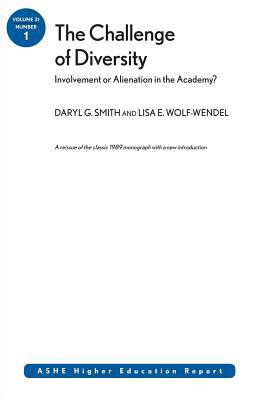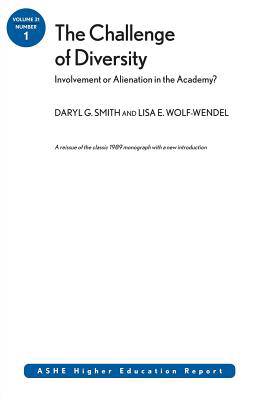
- Retrait gratuit dans votre magasin Club
- 7.000.000 titres dans notre catalogue
- Payer en toute sécurité
- Toujours un magasin près de chez vous
- Retrait gratuit dans votre magasin Club
- 7.000.0000 titres dans notre catalogue
- Payer en toute sécurité
- Toujours un magasin près de chez vous
The Challenge of Diversity
Involvement or Alienation in the Academy: Ashe Higher Education Report, Volume 31, Number 1
Daryl G Smith, Lisa E Wolf-Wendel, AeheDescription
In 1989 when The Challenge of Diversity was first published, the monograph made the case that the country's changing demographics required reframing diversity to focus on institutions' capacity to educate and involve an increasingly diverse student population. Looking at current research, the book pointed to patterns of alienation, not involvment.
Our demographics are indeed different today, but many of the same challenges remain: access and success for historically underrepresented minority groups, but also the basic institutional issues such as curriculum, climate, and hiring. At the same time, the context has changed: nontraditional students (older students, women, and part-timers) are now mainstream, and numbers of some minority groups and multiracial students continues to grow. While higher education has changed profoundly, our institutions still have not yet developed the capacity to successfuly educate the diversity of students present on our campuses today. In addition, we are experiencing a backlash to some diversity initiatives, and societal factors indicate that higher education needs to become more proactive in responding favorably to diversity. If the monograph were first published today, we would call it The Imperative of Diversity.
This is Volume 30 Issue 6 of the Jossey-Bass series ASHE Higher Education Report.
Spécifications
Parties prenantes
- Auteur(s) :
- Editeur:
Contenu
- Nombre de pages :
- 152
- Langue:
- Anglais
- Collection :
- Tome:
- n° 106
Caractéristiques
- EAN:
- 9780787981228
- Date de parution :
- 04-05-05
- Format:
- Livre broché
- Format numérique:
- Trade paperback (VS)
- Dimensions :
- 147 mm x 224 mm
- Poids :
- 235 g

Les avis
Nous publions uniquement les avis qui respectent les conditions requises. Consultez nos conditions pour les avis.






